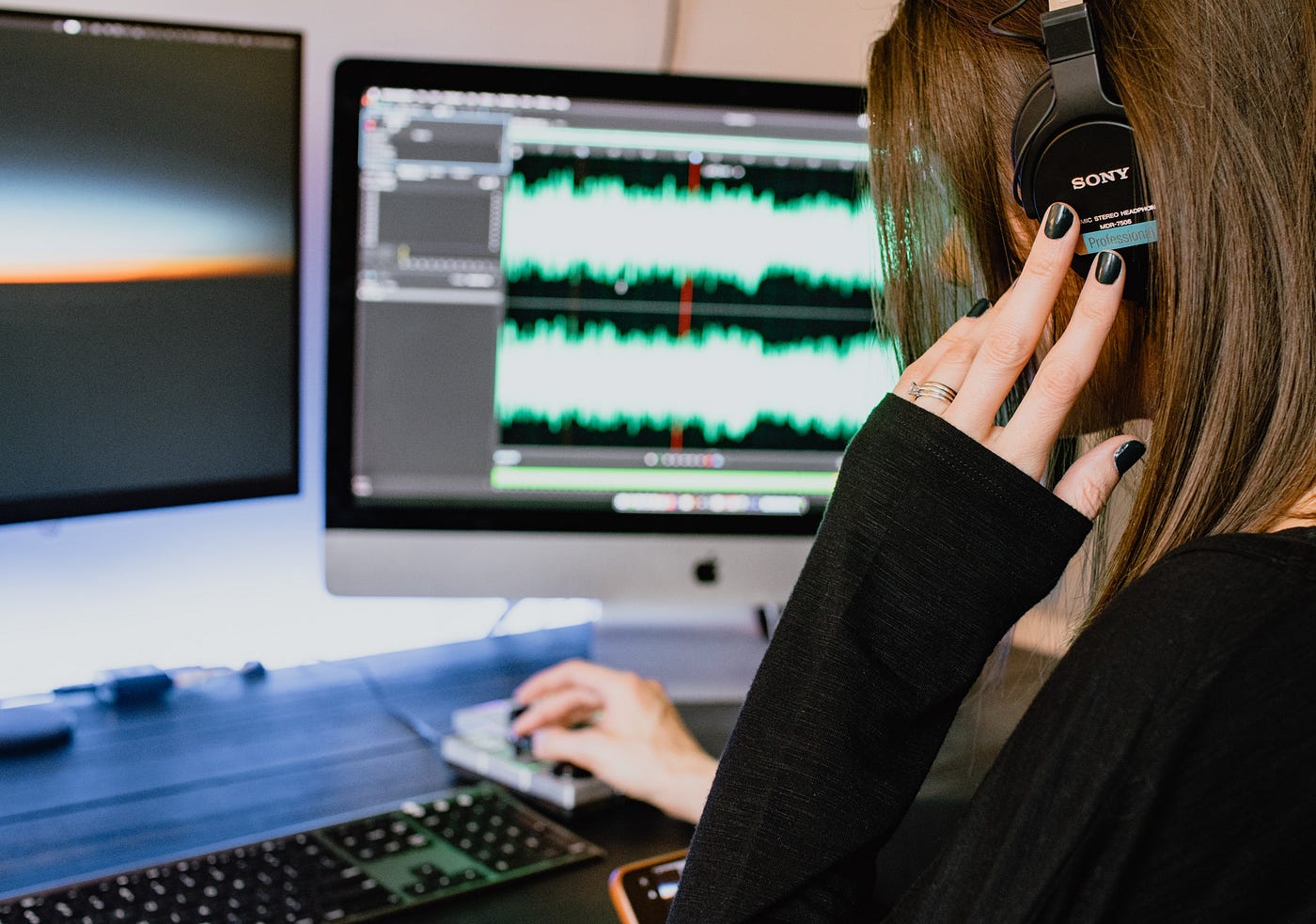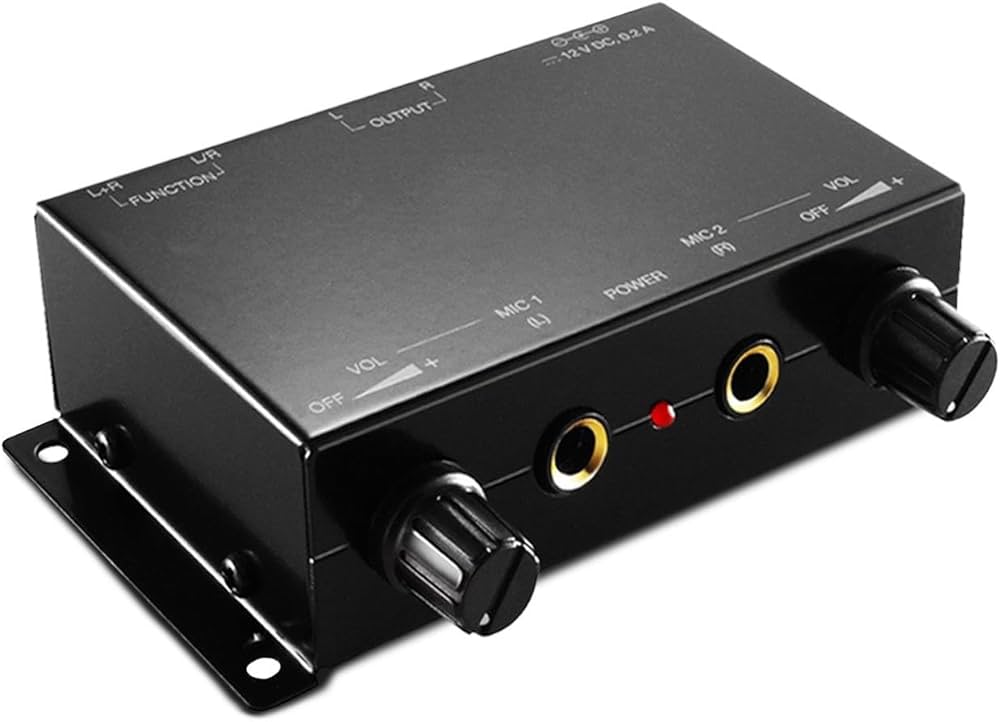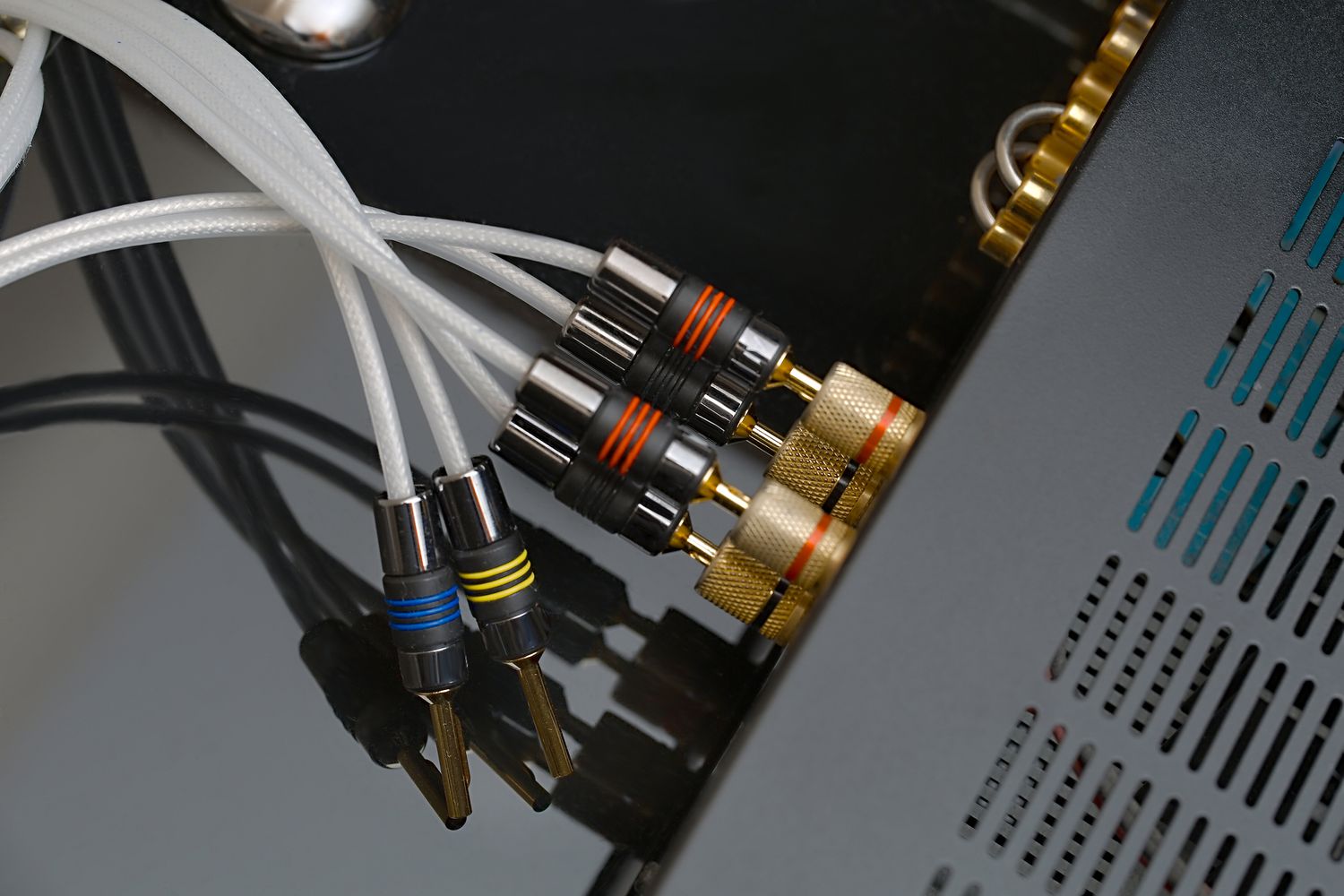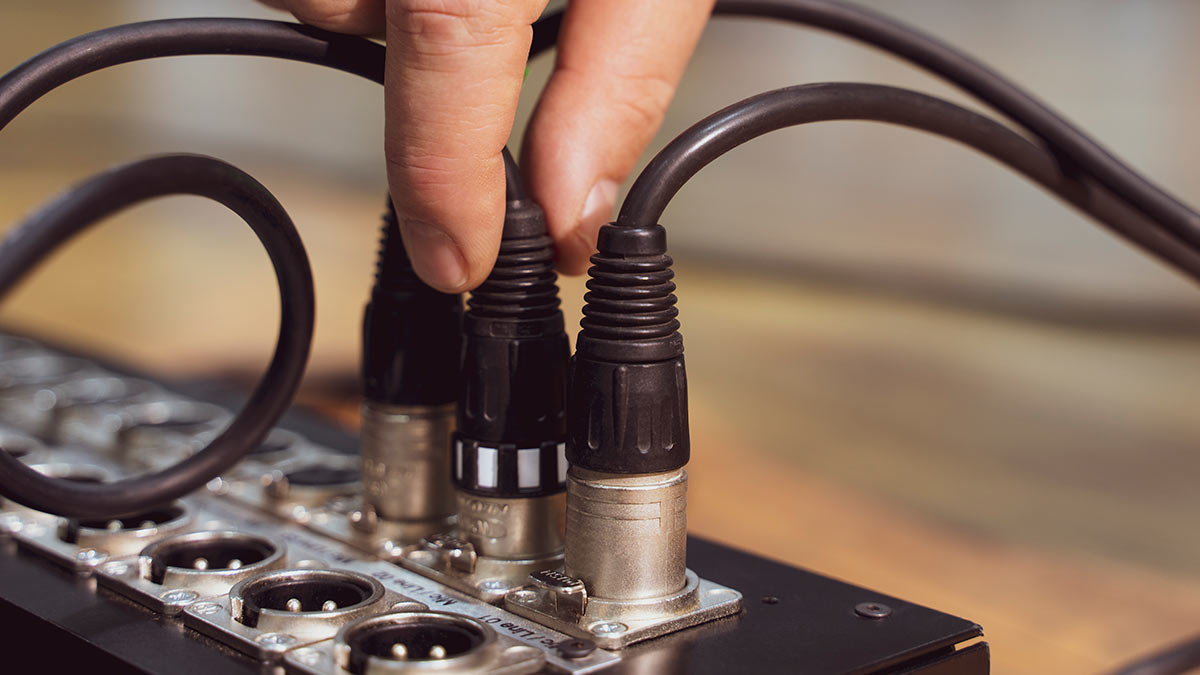Home>Production & Technology>Audio Cable>How To Use Virtual Audio Cable With Audition


Audio Cable
How To Use Virtual Audio Cable With Audition
Modified: January 22, 2024
Learn how to use Virtual Audio Cable with Audition to enhance your audio experience. Connect and route audio signals with ease using this powerful audio cable.
(Many of the links in this article redirect to a specific reviewed product. Your purchase of these products through affiliate links helps to generate commission for AudioLover.com, at no extra cost. Learn more)
Table of Contents
Introduction
Welcome to the world of virtual audio cables! If you’re a professional audio enthusiast or a content creator, you know the importance of high-quality sound and seamless audio routing. In the realm of digital audio, virtual audio cables have become an essential tool for achieving professional-grade audio setups.
Virtual Audio Cable, often abbreviated as VAC, is a software application that allows you to route audio signals between different software applications, devices, or virtual sound devices within your computer. It creates virtual input and output devices that act as conduits for audio signals, enabling you to send and receive audio streams just like physical cables would.
Whether you’re looking to record podcasts, stream live audio, or enhance your audio mixing and production workflow, understanding how to use Virtual Audio Cable with Adobe Audition can be a game-changer. By utilizing the power of VAC and the versatile features of Audition, you can take your audio projects to new heights.
In this comprehensive guide, we’ll explore the process of using Virtual Audio Cable with Audition, including installation, configuration, and practical applications. Whether you’re a beginner or an experienced user, this guide will help you harness the full potential of virtual audio cables and Audition’s powerful audio editing capabilities.
What is Virtual Audio Cable?
Virtual Audio Cable, commonly referred to as VAC, is a software application that allows for the creation of virtual audio devices on your computer. These virtual devices act as virtual cables, enabling the routing of audio signals between different software applications or audio devices within your computer.
Unlike physical audio cables that connect hardware devices, virtual audio cables operate within the digital realm. They establish a virtual connection between software applications, allowing for the seamless transfer of audio data. This functionality is particularly useful in scenarios where you need to route audio between different programs or perform complex audio setups that are not possible with physical cables.
By installing Virtual Audio Cable on your computer, you gain access to virtual audio input and output devices. You can think of these virtual devices as the endpoints of a virtual audio cable, where audio signals can be sent and received. These virtual devices appear as separate audio devices in your system, allowing you to assign them to specific software applications or use them for audio routing and processing.
One of the significant advantages of Virtual Audio Cable is its flexibility. It provides a wide range of customization options, allowing you to control the number of virtual cables and specify their characteristics, such as sample rate, buffer size, and channel configuration. This level of control ensures optimal audio performance and compatibility with different software applications.
Virtual Audio Cable is widely used in various audio-related applications, such as audio mixing and production, streaming, video conferencing, recording podcasts, and more. It allows for complex audio setups and advanced audio routing, enabling users to achieve professional-grade audio results.
Now that you have a basic understanding of what Virtual Audio Cable is, let’s dive into the process of installing and configuring it on your computer.
Installing Virtual Audio Cable
The first step in utilizing Virtual Audio Cable is to install the software on your computer. Follow these simple steps to get started:
- Start by visiting the official website of Virtual Audio Cable and download the latest version of the software. It is available for both Windows and Mac operating systems.
- Once the installer file is downloaded, double-click on it to initiate the installation process. Follow the on-screen instructions to proceed with the installation.
- During the installation, you may be prompted to select the installation location and agree to the license terms. Make the appropriate selections and proceed with the installation.
- After the installation is complete, you may need to reboot your computer to ensure that Virtual Audio Cable is fully integrated into your system.
Once Virtual Audio Cable is successfully installed on your computer, you can proceed to configure it for your specific audio needs.
Note: Before installing Virtual Audio Cable, make sure to close any audio-related applications running on your computer. This will prevent any conflicts or issues during the installation process.
Now that you have Virtual Audio Cable installed, let’s move on to the next step and configure it to work seamlessly with Adobe Audition.
Configuring Virtual Audio Cable
After installing Virtual Audio Cable on your computer, the next step is to configure it to meet your specific audio routing and processing requirements. Here’s how you can configure Virtual Audio Cable:
- Launch the Virtual Audio Cable Control Panel, which is typically accessible from the Start menu or the system tray on Windows.
- In the Control Panel, you’ll find various settings and options for configuring Virtual Audio Cable. The most important settings to consider are the number of virtual cables and their characteristics.
- By default, Virtual Audio Cable creates one virtual cable. However, depending on your needs, you can increase or decrease the number of virtual cables. Keep in mind that each virtual cable comes with its own set of input and output endpoints.
- You can also specify the sample rate and buffer size for each virtual cable. These settings impact the audio quality and latency. Higher sample rates and buffer sizes generally result in better audio fidelity but may introduce some latency.
- It’s essential to ensure that the sample rate and buffer size of Virtual Audio Cable match the settings of your audio devices and software applications for optimal performance.
- Once you have configured the desired settings, click on the Apply or OK button to save the changes.
With Virtual Audio Cable properly configured, you are now ready to integrate it with Adobe Audition to unlock a world of audio routing possibilities and enhance your audio production workflow. In the next section, we will explore how to set up Audition to utilize Virtual Audio Cable effectively.
Setting up Audition
Before you can start using Virtual Audio Cable with Adobe Audition, you need to configure Audition to recognize and utilize the virtual audio devices created by VAC. Here’s a step-by-step guide to setting up Audition:
- Launch Adobe Audition on your computer.
- Go to the “Edit” menu and select “Preferences” (Windows) or “Audition” > “Preferences” (Mac).
- In the Preferences window, navigate to the “Audio Hardware” tab.
- Under the “Default Input” and “Default Output” sections, select the Virtual Audio Cable devices that you want to use as input and output devices in Audition. These are the virtual devices created by Virtual Audio Cable.
- Make sure to also set the preferred sample rate and buffer size in the “Default Input” and “Default Output” sections to match the settings configured in Virtual Audio Cable.
- Click on the “OK” or “Apply” button to save the changes and exit the Preferences window.
Now that you have set up Audition to recognize the virtual audio devices from Virtual Audio Cable, you can start leveraging the power of audio routing within Audition.
With Audition and Virtual Audio Cable properly set up, let’s explore how you can use them together to streamline your audio workflow and unlock new creative possibilities.
Using Virtual Audio Cable with Audition
Now that you have Virtual Audio Cable set up and integrated with Adobe Audition, let’s dive into some practical applications of using them together:
1. Routing Audio between Applications:
Virtual Audio Cable allows you to route audio between different software applications running on your computer. For example, you can route the audio output from a media player to Audition for further processing or recording. To do this, simply set the output of the media player to the virtual audio device created by Virtual Audio Cable, and set the input of Audition to the same virtual audio device.
2. Recording System Audio:
With Virtual Audio Cable and Audition, you can record system audio, such as the sound playing from web browsers or other applications, directly into Audition. This is useful for capturing audio from streaming services, online videos, or any other audio source on your computer. Set the input of Audition to the virtual audio device created by Virtual Audio Cable, and Audition will capture the system audio through that device.
3. Live Streaming and Broadcasting:
If you’re a content creator or live streamer, Virtual Audio Cable can be used to route audio between different applications for seamless broadcasting. For example, you can route your microphone input and audio cues from software like OBS (Open Broadcaster Software) to Audition for real-time mixing and processing. This enables you to enhance the audio quality of your live streams.
4. Multi-Track Recording and Mixing:
By utilizing Virtual Audio Cable with Audition, you can create complex multi-track recording and mixing setups. You can route different audio sources, such as microphones, instruments, or external audio interfaces, to separate tracks in Audition for individual processing and mixing. This level of flexibility allows for professional-grade audio production.
These are just a few examples of how Virtual Audio Cable can be used with Audition to enhance your audio workflow. The key is to explore the possibilities and experiment with different routing configurations to achieve the desired results.
As you gain more experience using Virtual Audio Cable and Audition together, you’ll discover new ways to maximize their potential and elevate your audio projects to new heights.
Troubleshooting Tips
While using Virtual Audio Cable with Audition, you may encounter some issues or face challenges. Here are some troubleshooting tips to help you resolve common problems:
1. Ensure Proper Configuration:
Double-check the settings in both Virtual Audio Cable and Audition to ensure that they are properly configured. Verify that the sample rates and buffer sizes match between the two applications. Misconfigured settings can lead to audio issues and signal disruptions.
2. Check Audio Device Selection:
Make sure that you have selected the correct Virtual Audio Cable devices as your input and output devices in Audition. If you’re not hearing any audio or experiencing audio routing problems, ensure that the correct virtual audio devices are assigned to Audition.
3. Verify Application Compatibility:
Ensure that the software applications you’re trying to route audio between are compatible with Virtual Audio Cable. Some applications may have specific requirements or limitations when it comes to using virtual audio devices. Check the documentation or support forums for both Virtual Audio Cable and the specific applications to ensure compatibility.
4. Update Software Versions:
Make sure that you’re using the latest versions of both Virtual Audio Cable and Audition. Updates often include bug fixes and improvements that can help resolve issues and enhance performance. Check the respective websites for any available updates and install them if necessary.
5. Troubleshoot Audio Levels and Connections:
If you’re experiencing audio level discrepancies or issues with the audio signal, check your connections and audio settings. Ensure that the volume levels are properly balanced and that all cables and connections are secure. Also, check for any conflicting audio settings in both Virtual Audio Cable and Audition.
6. Restart Applications and Devices:
If you encounter any audio-related issues, try restarting both Virtual Audio Cable, Audition, and any other relevant applications or devices. Sometimes, a simple restart can resolve temporary glitches or conflicts causing audio problems.
If you have followed these troubleshooting tips and are still experiencing issues, it may be helpful to consult the documentation or seek support from the respective software developers or user community. Remember, patience and persistence are key when troubleshooting audio-related issues, and with time, you’ll be able to overcome any challenges and make the most out of Virtual Audio Cable with Audition.
Conclusion
In conclusion, Virtual Audio Cable provides a powerful solution for routing and transferring audio signals between software applications, devices, and virtual sound devices within your computer. When combined with Adobe Audition, it opens up a new world of possibilities for audio professionals and enthusiasts.
By installing and configuring Virtual Audio Cable, you can create virtual audio devices that serve as virtual cables, allowing you to route audio between different applications. This enables you to record system audio, route audio for live streaming, create complex multi-track setups, and much more.
Setting up Audition to recognize the virtual audio devices created by Virtual Audio Cable is crucial for seamless integration and optimal performance. By selecting the correct virtual audio devices as input and output devices in Audition’s preferences, you can unlock the full potential of this powerful combination.
Should you encounter any issues, the troubleshooting tips provided in this guide can help you resolve common problems and ensure smooth operation. Remember to double-check your settings, verify application compatibility, and keep your software versions up to date.
Using Virtual Audio Cable with Audition gives you the flexibility and control to create professional-grade audio projects, whether it’s for recording podcasts, streaming, audio mixing, or any other audio-related endeavor.
So, dive into the world of virtual audio cables, experiment with different routing configurations, and unleash your creativity with the seamless integration of Virtual Audio Cable and Adobe Audition. Your audio projects will reach new levels of quality and sophistication, making your work stand out in a crowded digital landscape.











